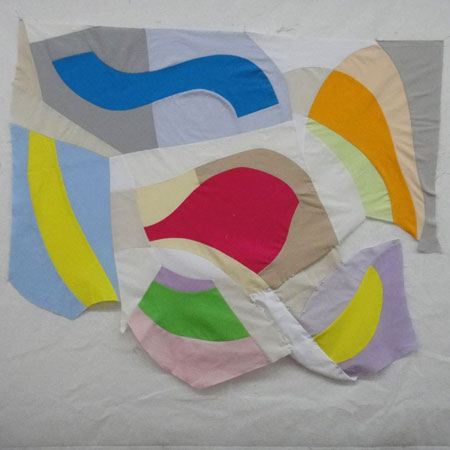On Day 2, we pulled out our brightest colors and created a bunch of curved machine-pieced samples with pastel backgrounds. It is amazing how much colors changed! Repeatedly, we would pull out a color that we thought was really bright, but once we put it on the wall, we could see that it might be dark, but it really wasn’t eye-catching bright. Out of all the fabrics I brought, I only had four or five that really worked as a bright. And while you might not want to create an entire quilt with just bright fabrics, tiny amounts certainly do make your quilt more alive.
Once again, when we had our samples made, we were to create a composition, but this time we were supposed to leave spaces between. For some reason, I just couldn’t wrap my mind around how this was supposed to work. It seemed like each individual composition would remain separate. I veered off in a direction that was completely wrong, which I suppose is the biggest hazard of working on your own after class hours. What I didn’t understand was we were going to insert a variety of whites between the segments, and the varying shades of white and the seamlines would end up visually tying everything together.

The funny thing is, I would say I failed this assignment, but I grasped the concept. I’m sorry I didn’t take a picture, but Nancy’s son had made a wire outline of a fish that was about 3 or 4 feet long. Within the wires he hung bits of colored glass, buttons, and stones. Each one was a little treasure of it’s own, just like our little mini compositions were supposed to be, but they were all held together with the wire lines, just like our white-on-white background was supposed to be. I probably should try this exercise again, too, because I was so confused that I really didn’t do it justice.